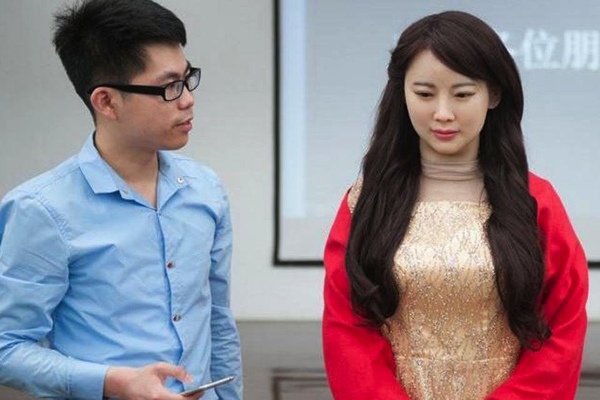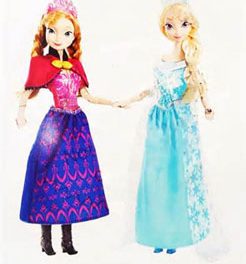Photo courtesy of the University of Science and Technology in China/USTC
Wow, we live in a world of scaredy-cats, don’t we? (My apologies to fierce felines everywhere who bravely stare down mice, dogs, and vacuum cleaners.) I’m thinking about the big human babies who are bawling about the invasion of “lifelike” robots. They are trembling nervously over these animatronic figures, which so far are female and quite “feminine” in demeanor. These worrywarts are fretting loudly about whether this is a harbinger for the end of the world as we know it. The most recent robotic “hottie” that has gotten folks all hot and bothered was unveiled in China. Its name is “Jia Jia” and the robot does look strikingly like a real-live 21st-century woman. However, its compliant and toady behavior is a throwback to the days of feudal subservience, which for many men equals the “the good old days.”
Well, guys and gals of science and industry, pop culture fans, Internet addicts, and the general populace — not to get all Hall of Presidents robotic FDR on you — but you honestly have nothing to fear but fear itself! As doll collectors, we have been face-to-face, eye-to-glass eye with talking effigies for more than a century now!
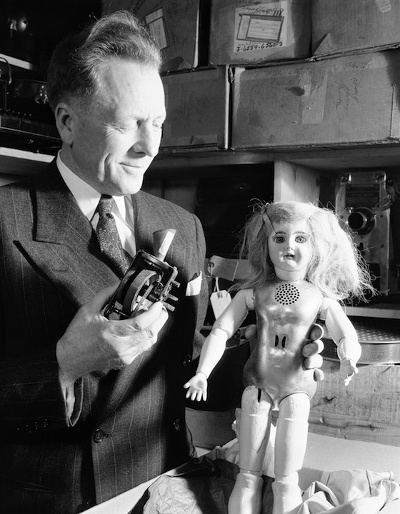
(Photo courtesy of Edison National Park Museum)
Way back in 1890, Thomas A. Edison, the Wizard of Menlo Park, introduced a plaything that mated his recent invention of recorded sound cylinders with the body of a porcelain French-jointed doll. It does sound potentially ominous, doesn’t it? According to the docents at the Edison National Park, which I trooped to with my family, these first chatting dolls were an immediate … failure! Yes, that’s right. The marketplace did not react well to this innovation.
At the museum in West Orange, New Jersey, we learned that the sales of these “modern marvels” dried up in a matter of months. The universe was not quite ready for a talking doll. (The tour group members believed it was the choice of poetry recitation — “As I lay me down to sleep” had an eerie sound when slowly recited in a high-pitched child’s cadence.) Actually, though, it might have been the price point for the dolls. In pre-20th-century America, the trappings of childhood were just coming into their own. A leisure class was just being birthed, and parents would spend money on their little ones, but not an amount that could be better placed elsewhere — like basic creature comforts of food and clothing.
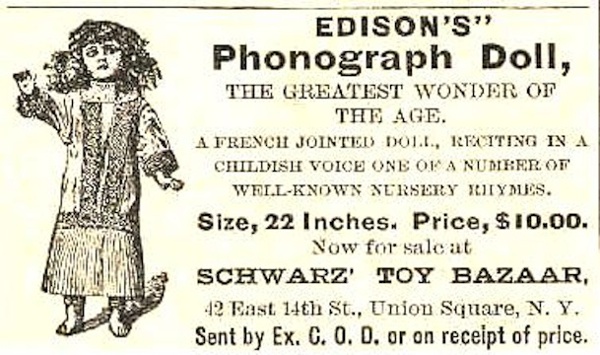
(Photo courtesy of Edison National Park Museum)
In the 1950s, when the Eisenhower Era was in full swing, and leading into the Camelot days of Kennedy, too, Mattel promoted their Chatty Cathy creation. This doll would say 18 different phrases, and all a child had to do was tug on its “Chatty-Ring.” Cathy was soon joined by her equally verbose friends: eyeglass-wearing, schoolmarm-ish Penny, who imparted 11 “instructive phrases,” and Little Miss Echo, who repeated back what was said to her. Miss Echo had a tape recorder hidden in her anatomy and was able to record 25 seconds of a child’s babbling, conversing, singing, and interacting. In a Watergate-transcript sort of way, the child would have to erase what was just said in order to make room for the next dismissable dialogue.
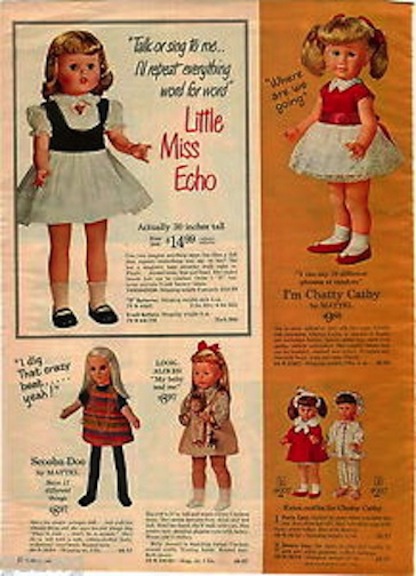
Little Miss Echo ad by Mattel appearing in Sears Catalog)
It has to be that 50 years ago we were a much more laid-back society. Here, we had little kids being left to their own devices, where they were being “taught” by the Penny doll. At the end of her lesson plan, the child would receive a diploma from the plastic professor. No one worried that her ABC encouragement was actually an acronym for “Apocalypse Be Coming.” Anything that seemed to speak to the future and technology was welcomed with open arms. Yes, back in the 1960s, science was still portrayed as “our friends.” This was before “2001: A Space Odyssey” put the kibosh on artificial intelligence in a huge way. Let’s face it, HAL, the computer, probably postponed Apple’s Siri for quite a few years. Many mainstream people were frightened by a machine that seemed to know more than they did and could predict outcomes and shut down a space station.
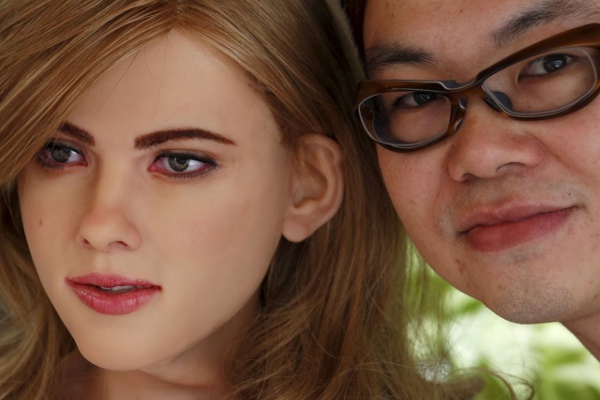
(Photo courtesy of US Weekly)
I’m not worried about these robots rising up and rallying against us. I can look at the Scarlett Johansson robot that Hong Kong designer Ricky Ma spent more than $50,000 to construct and say, “Eh, he could have bought 50 or 100 one-of-a-kind Scarlett face-ups with that cash.” I understand why he wanted his cyber creation to mirror Ms. Johansson — after all, she is the voice of the operating system that Joaquin Phoenix falls in love with in the movie “Her.” She’s got a husky vocal tone, a curvaceous figure, and a pretty face. What’s NOT to love if you are a science geek? I’d be more surprised if he chose to make his robot companion a replica of “The Golden Girls” and “Maude” star, Bea Arthur. (Though Bea did play a formidable and sympathetic female robot, called a fembot/femputer, in an episode of “Futurama.”)
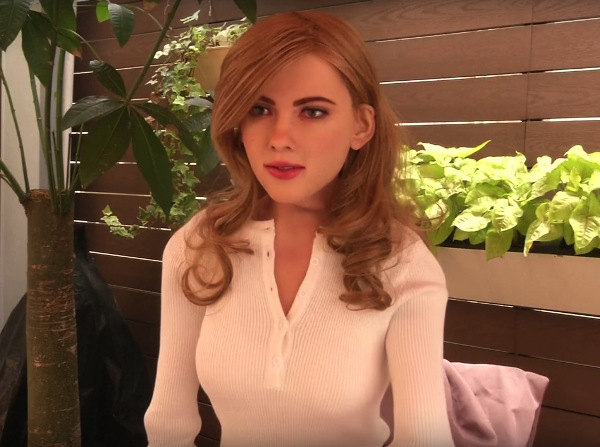
(Photo courtesy of US Weekly)
People need to chill and relax. Robots are really just well-made cell phones or calculators or computers masked within nearly six-foot human forms. To be terrified of an android Scarlett Johansson is as silly as being frightened of 2015’s “Hello Barbie” doll. Oh, wait a second … snap! Parent groups did lodge complaints against the Mattel innovation that stored facts about your child in a Sound Cloud.
When I met “Hello Barbie” at Toy Fair — that sentence would sound nutty to anyone other than a doll fan — I was told that she was an interactive toy that learned. To make her potential owner (presumably a child) feel more at ease, this Barbie told jokes. (To be honest, her comedic skills were pretty corny. She only garnered laughs because she was cute, smiling, and, well, a Barbie.) Not only did she have the capacity to engage in humorous bantering with her owner, but she would learn more about the child as each conversation progressed. The inquisitive doll would ask questions and the information would be retained in cloud storage, allowing Barbie to know your daughter’s (or son’s, given all these guys and their robo girlfriends) preferences, hopes, interests, and dreams. The “Hello Barbie” had the capacity to build a dossier on your child’s inner desires and wishes — definitely getting to know more about your kids than most parents could ever hope to achieve. Parents groups maintained that this wasn’t a friendship builder between child and doll, but rather an intrusive data grab by Mattel cloaked in the guise of innocent playtime.

(© Mattel)
“Hello Barbie” represents the give-and-take between a child and a doll that could only be hypothesized by the likes of Edison. It is the natural evolution in a contemporary child wanting to communicate with a doll that is considered a confidante and companion. However, the cloud storage and who might be mining it gives people pause. It’s not the doll-and-child dialogue that is causing parental agita; it’s who might be riffling through the cyber cloud, and what is the ultimate purpose.
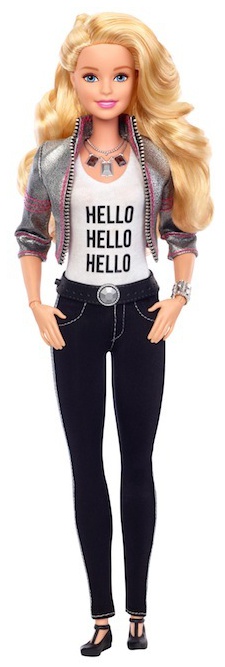
(© Mattel)
From Edison’s fledgling experiment to a “Hello Barbie” that files and remembers facts and figures about her owner, the doll revolution is upon us. We can cower and retreat, or we can walk forward and put our fleshy hand into their plastic ones. And always keep in mind, if we don’t like how things are going, we can definitely remove the batteries. Take that, all-knowing and all-scaring-us humanoid!

